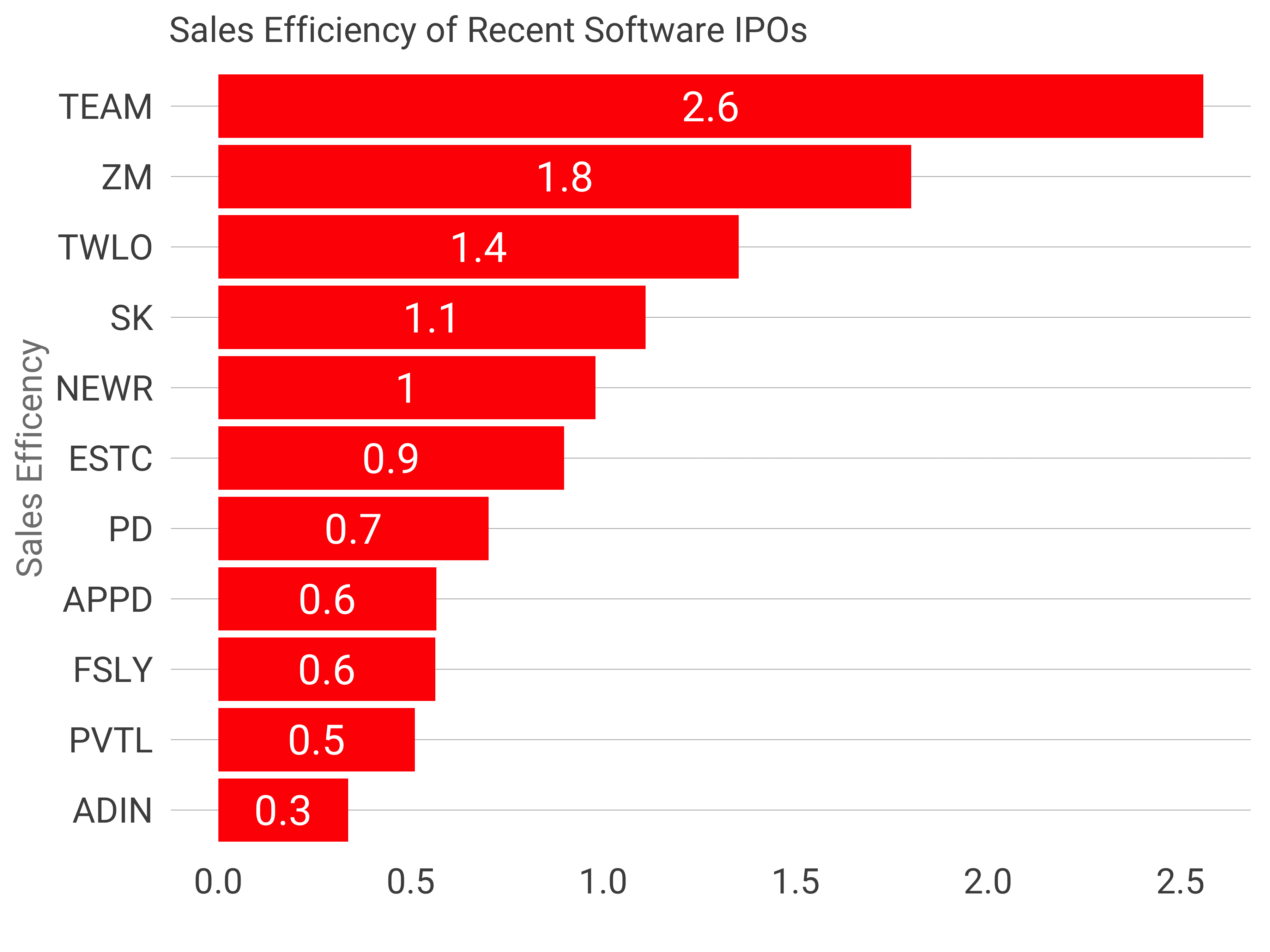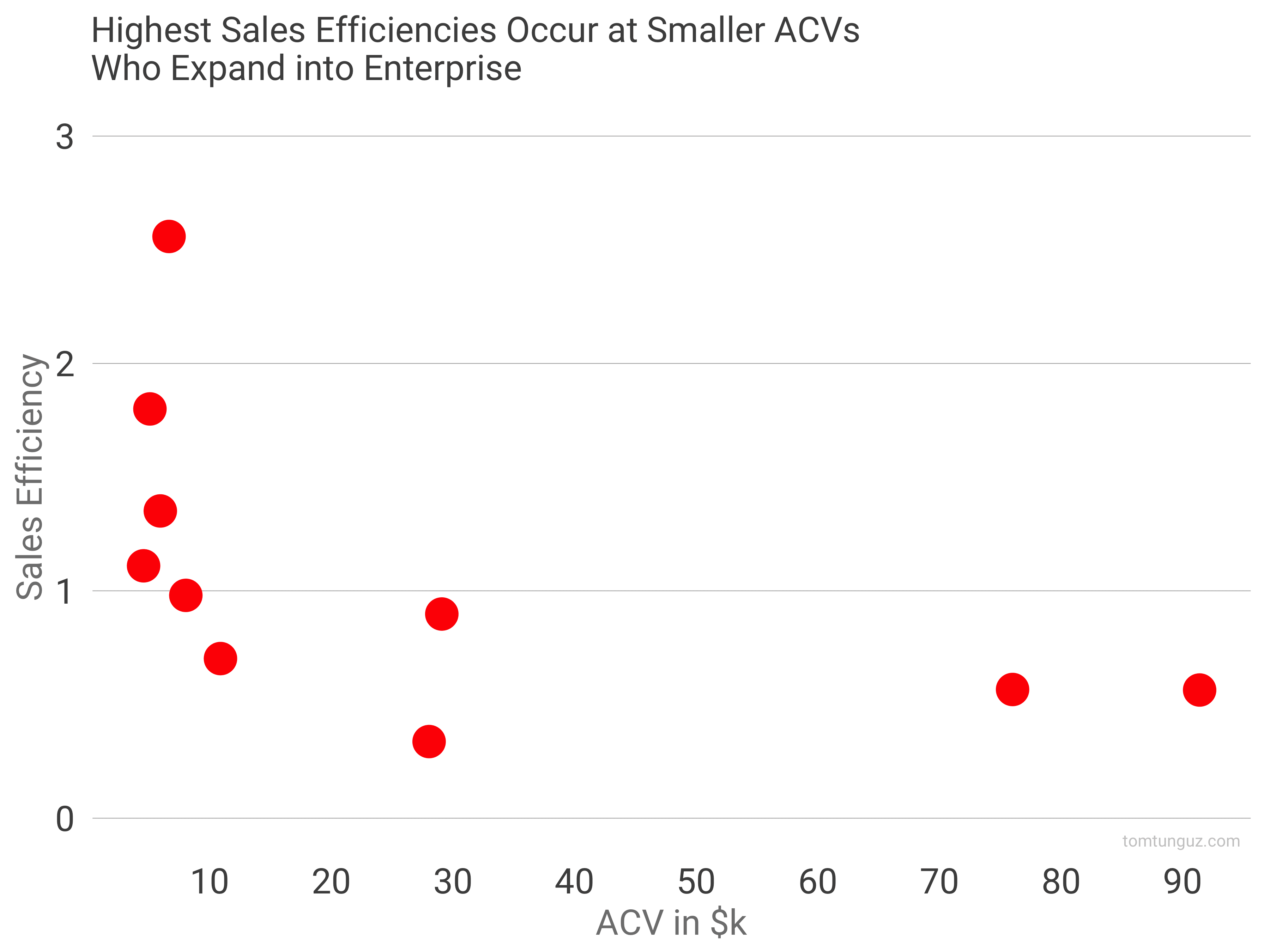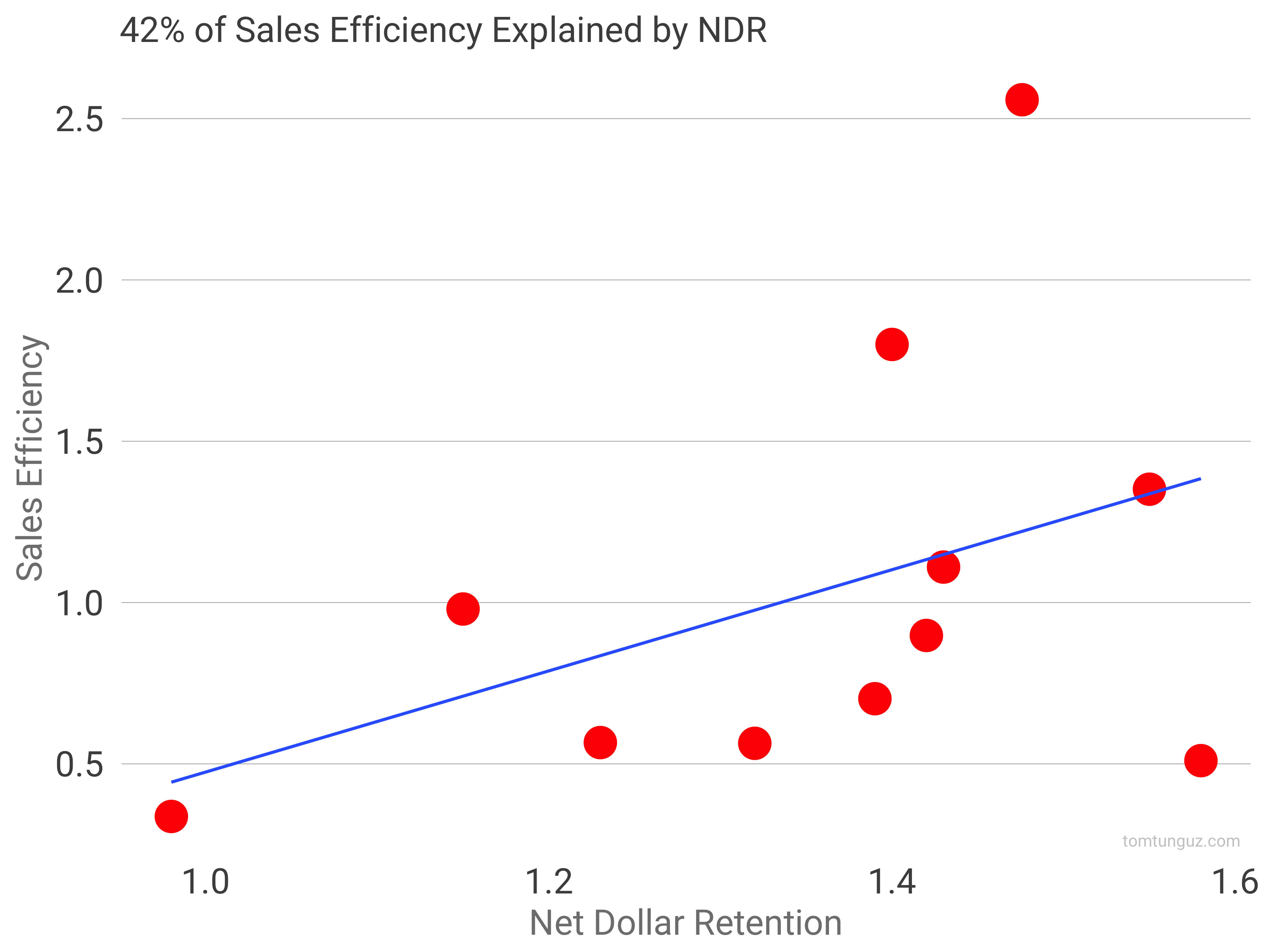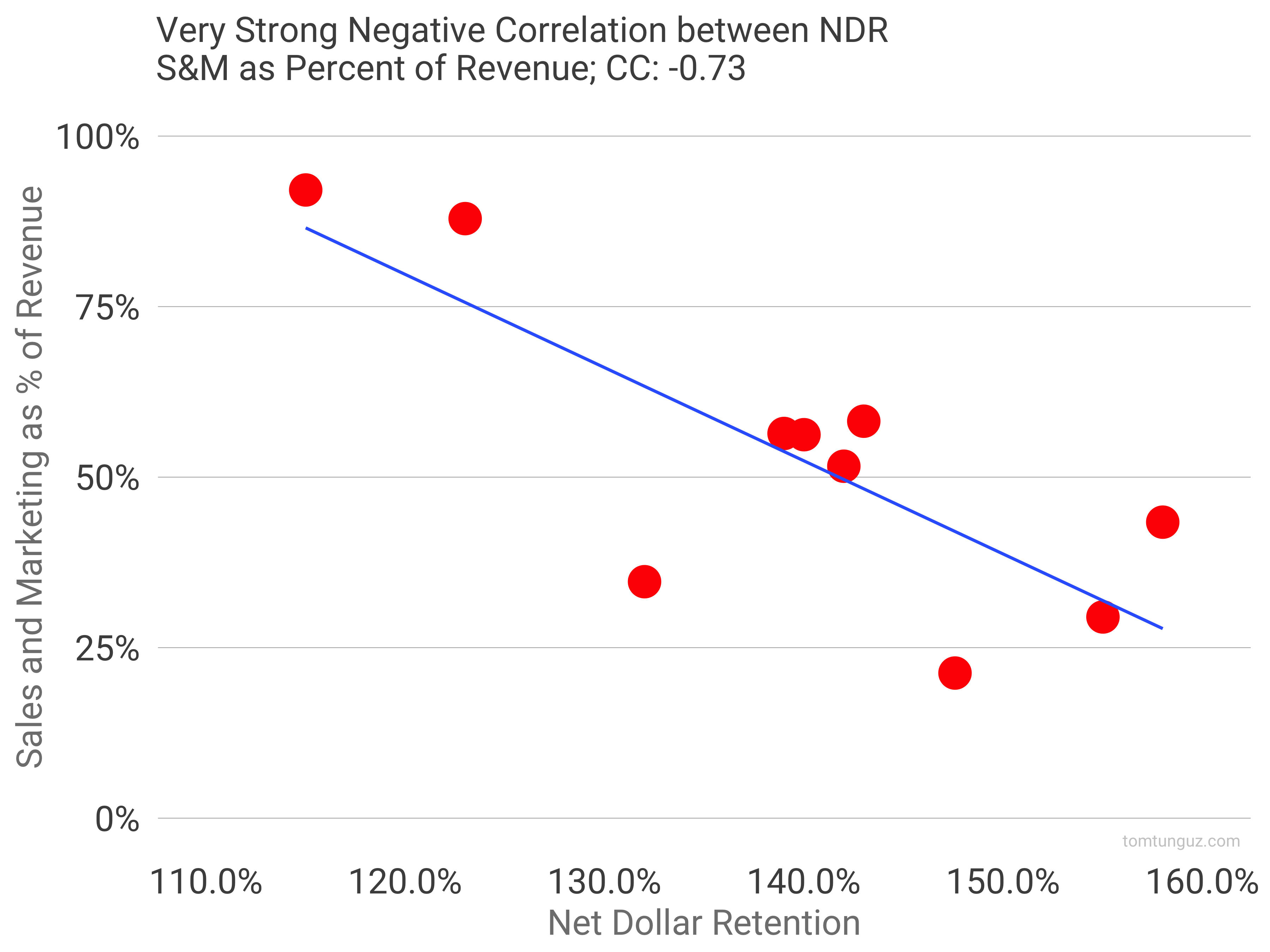A public market investors asked me if there are any patterns in the list of recent software IPOs with the best sales efficiencies. As I looked through the list, I noticed one.

All of these businesses sell bottom up with small initial ACVs that grow dramatically. Atlassian, Zoom, Twilio, Slack, New Relic, Elastic. All of them target small groups of users within larger organization who introduce the vendor. Over time, usage grows, accounts expand. Some acquire through open source, others through virality (Zoom).
And since expanding an existing customer costs significantly less than acquiring a new one, these expansion dollars require far fewer (and potentially zero) sales and marketing investment. If a majority of bookings come from expansion, then the business develops an incredible sales efficiency.
Let’s walk through an example. Imagine a $100M ARR business growing at 50% annually. Suppose the business generates 130% in net dollar retention (NDR). The business will grow this year by $50M. $30M will come from account expansion. The remaining $20M is new sales. So, this business must build a sales team large enough to generate $20M in new bookings; something like 30 account executives at $1M in annual quota and 70% attainment.
Contrast the same business with 110% account expansion. The business must staff a sales team of 58 AEs, about 2x. Holding sales and marketing costs constant, that means the sales and marketing spend of the second business is 2x, and the sales efficiency is half.
A few questions arise:
First, in order to generate great NDR, does the business require a small ACV?

Yes. The companies above with greater than 1.0 in sales efficiency have an average ACV of $5.5k with a standard deviation of $0.9k; a very tight band. But there’s an important caveat. These businesses have smaller initial ACVs but target mid-market and enterprise accounts, where total account values can be $100k+. For example, Slack’s ACV is $4.5k but accounts worth $100k generate 40% of revenues.
Second, if a business has a very good NDR, is sales efficiency the right way to analyze a business?
Probably not since the expansion dollars boost the implied sales efficiency materially. In many of these businesses, customer success drives the expansion, rather than sales. To get a better sense of the sales and marketing performance, the sales efficiency should be calculated on new logo acquisition solely, unless the sales and marketing teams exert significant effort in the expansion motions.
Third, to have a great sales efficiency number, do you need a great NDR?

The answer is quite likely yes. 42% of sales efficiency is explained by NDR.
Fourth, do companies with great NDR spend materially less on sales and marketing (and is the theory proposed in the second question validated in practice)?
 It’s a very strong yes. NDR has a -73% correlation with reduced sales and marketing spend as a percentage of revenue.
It’s a very strong yes. NDR has a -73% correlation with reduced sales and marketing spend as a percentage of revenue.
To summarize, if you want to build a business with world class sales efficiency develop a product that is adopted bottoms up but that grow to $100k+ ACVs in a large market.